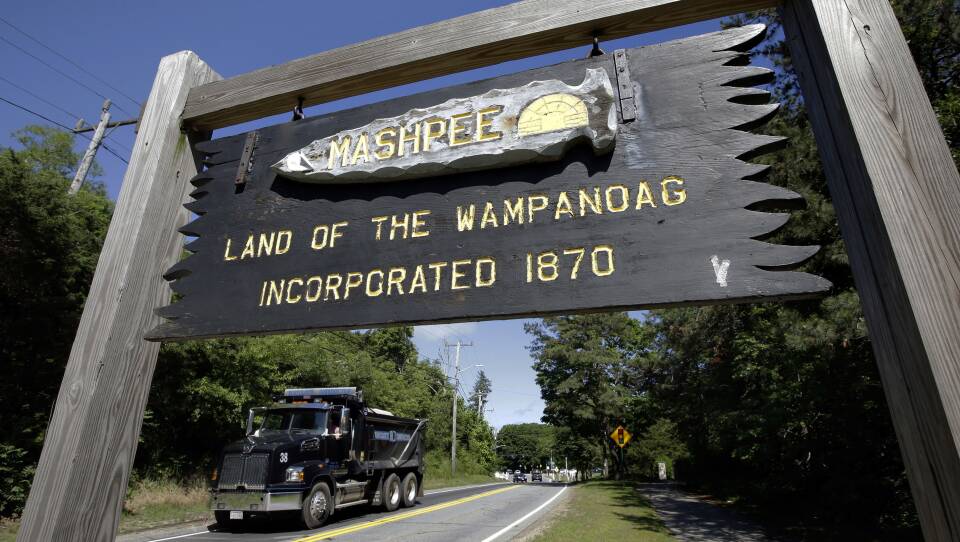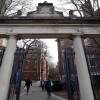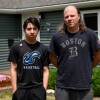As Harvard University acknowledges its museum collection has held the remains of thousands of Indigenous people for generations, some Native American leaders say the university is acting too slowly to release those remains to tribes for burial.
The student newspaper, The Harvard Crimson, reported last week on a leaked draft report from a steering committee that's reviewing what human remains are in archives of Harvard's Peabody Museum. Per the newspaper, the draft report says Harvard is holding the remains of about 7,000 Native Americans, as well as at least 19 people who were likely enslaved.
Harvard collected the remains during the eras of British colonialism and legal enslavement to conduct scientific research “to promote spurious and racist ideas,” the report acknowledges. A federal law in effect since 1990, the Native American Graves Protection and Repatriation Act, requires universities and museums to catalog human remains in their collections and return them to affiliated tribes that request them.
Two Native American leaders said Harvard has enough information about the remains to return them, while another emphasized they shouldn’t have been collected in the first place. A fourth expressed appreciation for Harvard’s efforts so far.
The Harvard Crimson quotes the report as saying that identifying the provenance of remains "might include DNA or other analysis for the express purpose of identifying lineal descendants.”
But Shannon O'Loughlin, CEO of the Association on American Indian Affairs and a citizen of the Choctaw Nation of Oklahoma, said that shouldn’t be necessary, since most of the remains have enough geographic information associated with them to determine where they're from.
“It's a pretty simple process," O'Loughlin said. "It is not a scientific investigation. It does not require any research or DNA evidence. In fact, the law expressly says that no additional research is necessary. The museum is supposed to use information it already has and consult with tribes, and tribes share information that they have, and repatriation happens."
The federal law requires that remains be repatriated to“culturally affiliated” tribes, meaning there’s a shared cultural identity that can be historically traced between the remains and a present-day tribe.
Cheryl Andrews-Maltais, chairwoman of Wampanoag Tribe of Gay Head Aquinnah, said Harvard is using that requirement as an excuse to slow down repatriations.
"From our perspective, that's just a way of these facilities — whether it's Harvard Peabody Museum or any other museum or curatorial facility — it's a way of hanging onto our ancestors by saying, 'Oh, we don't know who to give them back to,'” she said. “Yeah, you do. [The federal law is] pretty plain about it."
The federally recognized tribes in the Northeast, she said, have sufficient cultural affiliations to handle many of the repatriations.
"We're linked by blood, we're linked by tradition, we're linked by culture, and we're linked by language. So anyone in the Northeast that would be an Algonquian-speaking person would be considered culturally affiliated," she said.
The Crimson quotes the report as calling for an on-campus space where remains can be respectfully viewed and studied.
"There's no such thing as 'respectfully viewed and studied' when you're talking about the human remains of our ancestors," Andrews-Maltais said. "It is absolutely repugnant in most indigenous communities, never mind the rest of the world. So I don't understand how Harvard, after all these years of working with us, can even verbalize something that is that offensive to the dignity of our ancestors."
The remains shouldn’t have been collected and stored on shelves in the first place, said Jessie Little Doe Baird, the founder of the Wampanoag Language Reclamation Project and a former member of the Mashpee Wampanoag Tribal Council.
"The peoples' bones that they're holding on shelves are people's mothers and daughters and sons and fathers and sisters and brothers,” she said. “Unless I give my body to science, it's never an OK thing for somebody to keep me on a shelf, to keep my remains on a shelf."
Baird said she was not surprised by the number of individual human remains in Harvard's collection, noting that the collection in the Smithsonian Institution in Washington, D.C., is many times larger. In 1987, just three years before lawmakers passed the repatriation act, the Smithsonian had an estimated 34,000 skeletal remains,14,500of which were Indigenous North Americans. The institution has since repatriated remains of more than 6,000 individuals.
In a written statement, Evelynn Hammonds, a professor of the history of science and of African and African American Studies who chairs the Harvard steering committee studying the issue, focused on the leak of the draft report.
“It is deeply frustrating that the Harvard Crimson chose to release an initial and incomplete draft report of the Committee on Human Remains," she said. "Releasing this draft is irresponsible reporting and robs the Committee of finalizing its report and associated actions, and puts in jeopardy the thoughtful engagement of the Harvard community in its release. Further, it shares an outdated version with the Harvard community that does not reflect weeks of additional information and Committee work."
She said the committee looks forward to sharing the report "in a responsible and inclusive manner" once it is finished.
John Peters Jr., executive director of the Massachusetts Commission on Indian Affairs, said he’s been in the room where Harvard stored the remains, when he was working to recover members of his own tribe - the Mashpee Wampanoags.
“It was quite an experience to go in there," he said. "Boxes piled to the ceiling of different ancestors from around the world. It was quite moving to be in there. Quite moving."
Peters credits Harvard for making an effort to repatriate remains.
"There have been some issues over the years, but I think they've come to the final realization that it is in the best interest to do the best they can to return these ancestors," he said.








